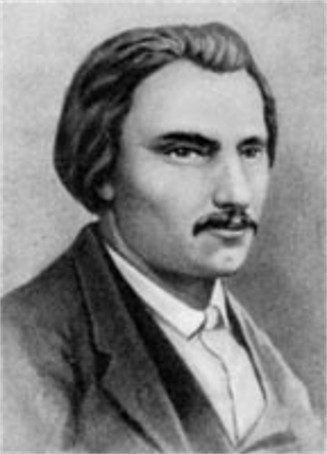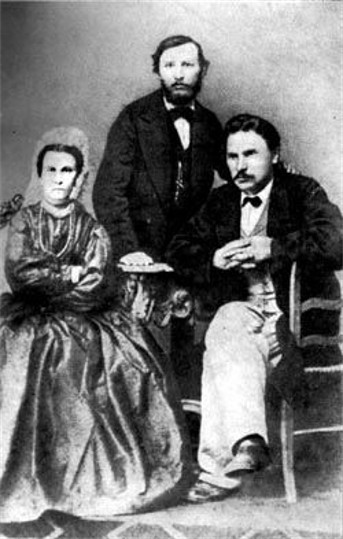Rudansky, Stepan
Rudansky, Stepan [Rudans’kyj], b 6 January 1834 in Khomutyntsi, Vinnytsia county, Podilia gubernia, d 3 May 1873 in Yalta. (Photo: Stepan Rudansky.) Poet. He studied at the Saint Petersburg Academy of Medicine and Surgery, and after graduation (1861) he worked for the rest of his life as a doctor in Yalta. Rudansky began to write poetry in his pre–Saint Petersburg days, while still a student at the Kamianets-Podilskyi Theological Seminary, and that poetry shows the influence of Taras Shevchenko's work and of folklore. He began to publish his work in 1859 in Saint Petersburg, where he became friendly with a group of Ukrainian writers working on the journal Osnova (Saint Petersburg). Having begun in the genre of the Romantic ballad, Rudansky then turned to poetry on social issues, using that of Shevchenko as a model. That later poetry featured a condemnation of serfdom, a rallying call to work in the field of Ukrainian culture, and a reliving of the glorious history of the Ukrainian people. Rudansky achieved long-lasting fame as author of Spivomovky (Singing Rhymes, 1880), which consisted of poems of various length, jokes, proverbs, and short anecdotes about landlords, clerics, Gypsies, Muscovites, Poles, Jews, Germans, devils, Cossacks, peasants, and so forth, derived mainly from folk oral literature and written in a jaunty tone with pointed humor and many witticisms. Apart from those light-hearted spivomovky, Rudansky wrote lyric poetry filled with an aching sadness, which reflected not only the poet's personal life but also the sufferings of all his people. Some of those poems are autobiographical, and some became popular songs (such as ‘Povii vitre, na Vkraïnu’ [Blow, Wind, on Ukraine]). Rudansky's works also include translations, such as of Slovo o polku Ihorevi (The Tale of Ihor's Campaign), of excerpts from the Králové Dvåur Manuscript, of Homer's Iliad, of Virgil's Aeneid, of a part of Mikhail Lermontov's Demon, and of individual poems by Heinrich Heine, Teofil Lenartowicz, and Branko Radičević. Most of his significant works were published only posthumously. Rudansky's style straddles the Romantic and the realist. His imagery and the poetics of his ballads and lyric poems are clearly of folkloric derivation. Editions of Rudansky's works have appeared in 1895–1903 (7 vols) and 1972–3 (3 vols).
Ivan Koshelivets
[This article originally appeared in the Encyclopedia of Ukraine, vol. 4 (1993).]


